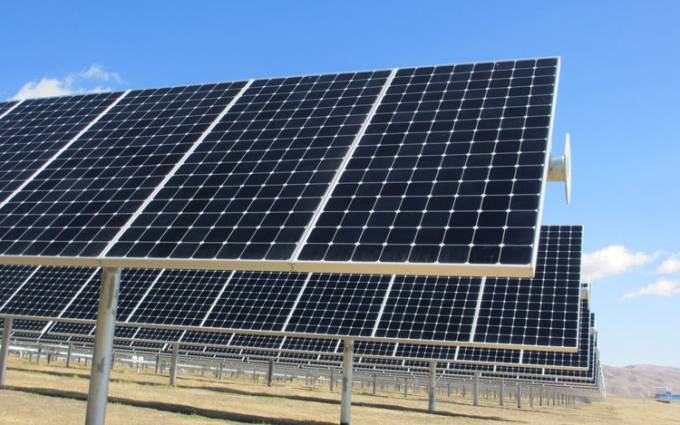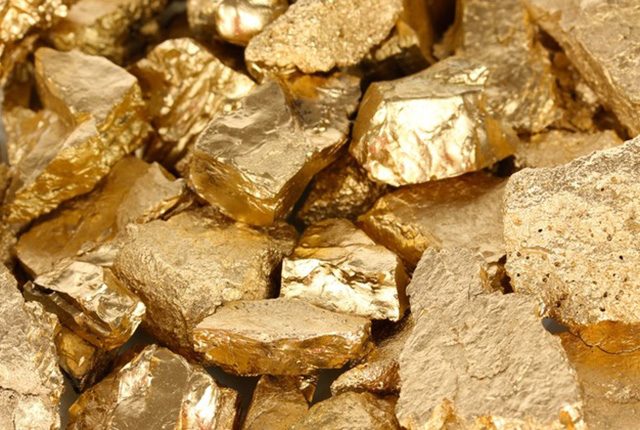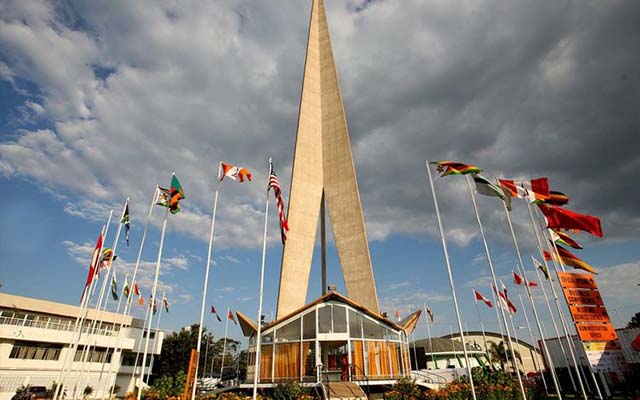Mimosa sets pace in switch to solar power

Jeffrey Gogo Climate Story
At Mimosa Platinum in Zvishavane, more than 350 solar water heaters installed in staff houses three years ago generate 1,5MW of power, but the company says this has made only a small difference to its electricity bill, given the amount of power required by the mine itself. The mine uses 26 mega volt amps of grid power at maximum demand, according to company executive chairman Mr Winston Chitando. That’s about three times the capacity demand for Chinhoyi town, excluding the farms, on a daily basis, or one and half times the demand for Gweru city, minus the mines.
But despite the initial lack of tangible financial gain, plans were now afoot for a complete switch to renewable energy, Mr Chitando told The Herald Business.
“The financial impact in the context of Mimosa’s overall costs has not been as significant . . . the little we save through solar initiatives improves in that small way the overall supply of electricity,” said Mr Chitando, via email.
“There are a number of independent power producers that were engaged to carry-out feasibility studies on the viability of the installation of solar (power) plants at the mine. The results of the feasibility studies and tariffs to be used and way forward are still awaited,” he added.
Countrywide, power supplies have now largely stabilised over the last 12 months.
But when drought hit hydro-power between 2015 and 2016, industrial production fell by more than 50 percent, according to the Confederation of Zimbabwe Industries, as state power utility Zesa Holdings failed to produce sufficient electricity to meet demand.
And as grid electricity supplies have for the greater part of the past 15 years come in drips and drops, businesses, which consumes 64 percent of the national power supply, have been hurt badly. During 2015-16, CZI data show that energy costs levied the equivalent of 8 percent on total company operating costs,
Now, a lack of tangible financial savings — at least at the outset or when done at a smaller scale — may be a big put off for some companies in the switch to renewable energy.
But Mimosa Platinum appears to have settled for the long-term view, moreso in a country where power costs can be huge drag on profits.
“We feel proud to play a part in renewable energy initiatives,” Mr Chitando boasted, out of sync, of course, with several of his peers in business that haven’t played the part in transitioning to renewable energies, even when they were the largest source of climate-changing greenhouse gas emissions.
Grid dependent
According to the latest CZI Manufacturing survey, only 2 percent of company spending on energy alternatives to the national grid in 20l6 went to solar power.
Another 10 percent went to liquefied petroleum gas. The majority — 60 percent — went to diesel generators, the survey said.
Altogether, CZI data show that over 25 percent of Zimbabwean companies remain completely dependent on grid electricity supplies.
But Mimosa Platinum expects that installing solar power will not only achieve long-term financial gain, but dovetails with the company’s cost cutting measures.
“. . . our cost saving strategy is that every dollar you can save is necessary as all the various dollars savings aggregate to a good operating cost base which Mimosa has managed to maintain over the past few years,” said Mr Chitando.
He said the company had constantly negotiated with Zesa Holdings for prioritised power supply at times of critical shortage.
Across industry, most companies have been slow in making the switch to cleaner energy, said Mr Tendai Marowa, a director with the Business Council for Sustainable Development Zimbabwe, in a past interview.
That’s in part due to a lack of clear-cut national policies for driving renewable energy use in industry, he said then.
“Business, development partners and Government have stepped up collaboration on building capacity on preparing bankable projects that can attract climate-related funding which companies can use to re-engineer their operations to achieve economic, social and environmental benefits including carbon emissions reduction,” Mr Marowa said by phone Friday.
Miles Ahead
At Mimosa Platinum, Zimbabwe’s second largest platinum producer, solar power still makes up for a “fairly insignificant” portion of the overall power supply.
The current supply from solar energy has been limited to heating water in staff houses and at a park at the mine, Mr Chitando said.
However, this fits well into national goals for curbing the emission of carbons into the atmosphere, which have been blamed by scientists for causing the earth’s temperatures to rise, sparking a deluge of dangerous extreme climatic events such as droughts and floods.
According to a Government plan drawn up under the Paris agreement on climate change, Zimbabwe requires $3 billion in global aid to roll out solar projects that are not connected to the grid.
The plan aims to avoid 179 gigatonnes of emissions by 2030 through mandatory installation of solar water heaters in all new homes, and in commercial and industrial buildings.
Overall, the country aims to cut emissions by 33 percent (17 300 gigatonnes) by 2030, mostly by increasing investment in hydro and solar power and improving energy efficiency.
As at August 16, nearly 28 percent of Zimbabwe’s electricity supply came from fossil fuel power plants, and over half from hydro-power.
The remainder is imported, according to ZESA Holdings.
However, the share of renewable energy in Zimbabwe’s electricity mix still compares favourably to much of Africa by far. Morocco is targeting a 52 percent share by 2030.
God is faithful.










Comments